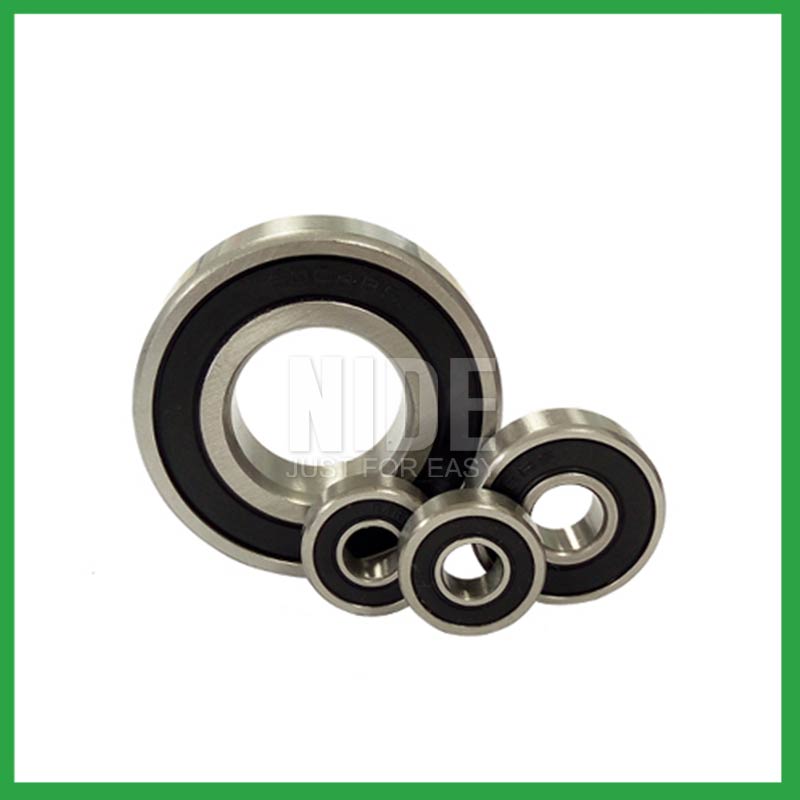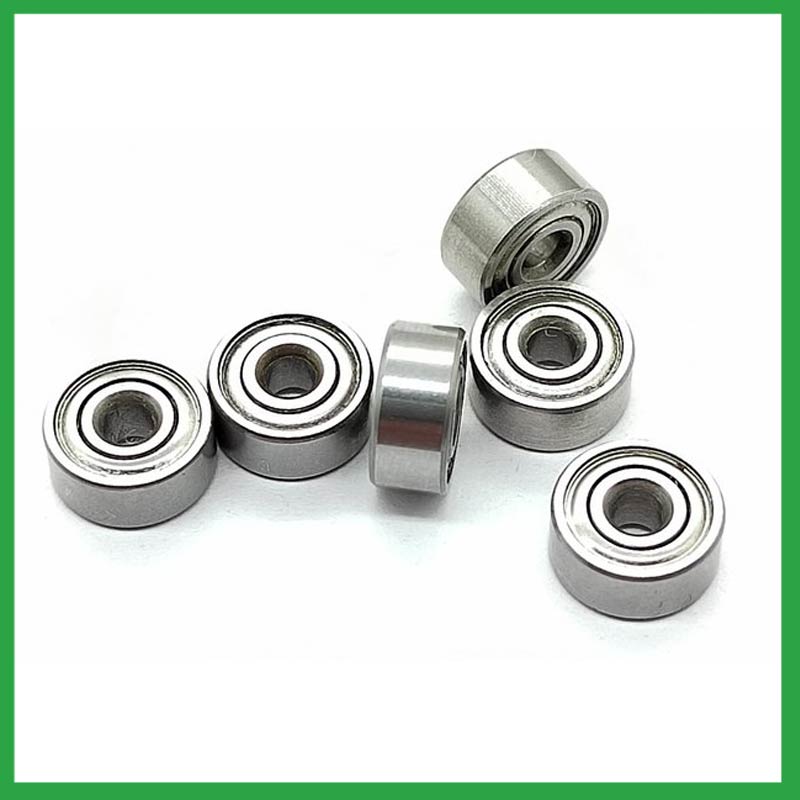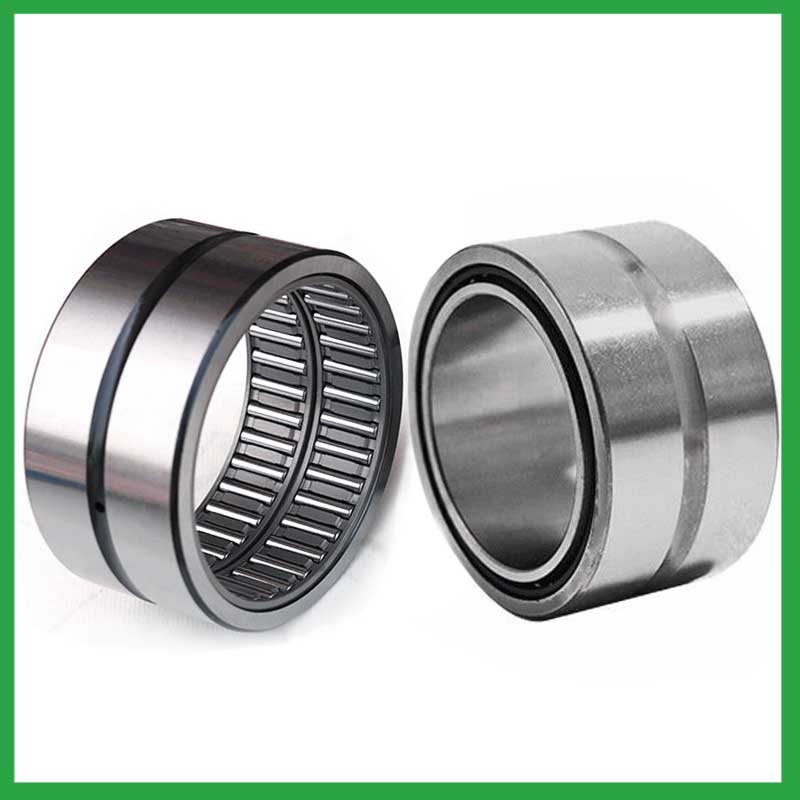PRODUCTS
CONTACT US
Ningbo Nide International Co., Ltd.
一一
· Contact person:Jack Zeng
· Mob/Whatspp/WeChat:0086-13738869026
· Email:emarketing@nide-group.com;marketing4@nide-group.com
· Add:No. 169, Wohushan Road, Daqi Subdistrict, Beilun District, Ningbo, China

Nide team could manufacture ball bearing as per customer’s drawing and samples.
If customer only has samples, we could also design drawing fo r our customer.
We also provide customized service.
Our ball bearing is widely applied the different industrials.
Haishu Nide International Co., Ltd produces and supplies ball bearings.We have professional technical manpower for the mixing of polymer raw materials for the insulation coating of bearings, production of products, and quality control. We will grow together with customers with accurate quality, fast delivery and competitive prices.
In years of practice, we have established a strict quality assurance system. Our product range covers carbon brush,commutator,fan,insulation paper,ball bearing,shaft,thermal protector, etc. They are widely used in fields such as compress motor,washing machine motor,fan motor,BLDC motor,water pump motor,air condition motor,electric automotive motor. We can produce OEM products and make the following drawings. Our principle is to prioritize service and quality!

| Parameter | Information |
| Product Name | omnidirectional ball bearing |
| Brand Name | Nide |
| Place of Origin | Ningbo,China |
| Type | Ball |
| Material | ceramics, etc. |
| Sample | Avaible |
| Warranty | 3months-1year |
| Lubrication | Dry/ Oil |
| Application | high-speed electric tools,chemical equipment, etc. |
| Port | Ningbo/Shanghai |
| Size(mm) | customize |
| Export Country | Argentina,Brazil,South Korea,Cook Islands,Finland,Madagascar,Bolivia...etc |
| Export region | Africa,Asia,Europe... |
| Certification | ISO 9001 Certification,CE-stator coil forming machine,CE-stator coil winding machine,etc |
| Precision Rating | as per customer's requirement |
| Feature | Strong carrying capacity,High speed...etc |
| Packaging Details | Suitable for sea transportation |
| Color | Silver gray+customized |
| Seals Type | Rubber seals |
| Service | Prompt Delivery |
| Supply Ability | 100000-500000 Piece/Pieces per Month |
| Lead time (days) | 15-20 (To be negotiated) |
Please note: The above table data is for reference only. For specific information, please contact us.
Bearings with ball bearings as rolling elements mainly include cylindrical roller bearings,adjustable ball bearings,deep groove ball bearings,angular contact ball bearings, etc.
During the installation process, pollution from dirt and wear media should be prevented;
Temperature and humidity should be controlled to avoid excessive temperatures during startup and operation;
It should be operated and lubricated in the correct reverse direction to avoid unnecessary damage.
Ball bearings have many advantages, making them highly competitive in the market.
Firstly, they are very durable and have good wear performance, making their service life longer than many other types of bearings.
Secondly, they are easy to install and can provide low friction performance in various applications.
Thirdly, they require a relatively low level of maintenance, making them cost-effective.
In addition, compared to many other types of bearings, their purchase cost is relatively low, making them an economical choice.




omnidirectional ball bearing---FAQs Guide
2.What is the typical noise level associated with omnidirectional ball bearing, and how are noise-reduction techniques applied?
3.How do preloaded omnidirectional ball bearing enhance rigidity and reduce clearance in high-precision applications?
4.How do manufacturers address concerns related to bearing noise and vibration in sensitive equipment?
5.Are there specific omnidirectional ball bearing designed for applications in the aerospace and aviation industries, and what standards do they adhere to?
6.Can omnidirectional ball bearing be used in both vertical and horizontal orientations?
7.How do different omnidirectional ball bearing designs, such as deep groove, angular contact, or thrust bearings, cater to specific applications?
8.How do cage materials and designs impact omnidirectional ball bearing performance and stability?
9.As a omnidirectional ball bearing manufacturer,What is your payment method?
10.Where can omnidirectional ball bearing be used?
11.Do omnidirectional ball bearing come in various tolerance classes?
12.About omnidirectional ball bearing,Can I add my own logo?
13.About omnidirectional ball bearing,What about the lead time?
14.How do omnidirectional ball bearing provide smooth and controlled motion in various mechanical systems, such as conveyor belts or automobiles?
1.How do manufacturers ensure the quality and reliability of omnidirectional ball bearing through material selection and precision machining?
High-precision measuring instruments, such as micrometers and gauges, are used to check the dimensions of the rings and balls to ensure they meet tight tolerances. Surface Finish Inspection: Surface finish is assessed using profilometers to ensure the required smoothness and low friction characteristics.
2.What is the typical noise level associated with omnidirectional ball bearing, and how are noise-reduction techniques applied?
To measure in accurate way the omnidirectional ball bearing noise under rotation during their manufacturing process is a key activity particularly in the production of medium, small and ultra-small deep groove ball bearings. This capability in bearings noise analysis has become the real distinguishing element between a standard bearings noise equipment and a superior class one.
The various types of vibration and sound in rolling bearings can be grouped in four main categories: structural, manufacturing, handling and other. The structural vibration consists mostly of race, click, squeal and cage noise: it can be continuous or intermittent depending on specific cases. The manufacturing vibration is instead related to the waviness noise generated by the geometrical imperfections of inner and outer ring and of rolling elements, being always continuous in nature. The so-called handling vibration is normally associated with flaw and contamination and is generating – in most of the cases – irregular noise. Then there are other types of vibrabition that include noise generated by sealing and lubricant (irregular) or by runout (continuous).
3.How do preloaded omnidirectional ball bearing enhance rigidity and reduce clearance in high-precision applications?
Enhance Rigidity: By applying a controlled axial force, preload increases the bearing's resistance to external forces and moments. This heightened rigidity is essential in applications where any deflection or misalignment must be minimized, such as in machine tools or robotic systems.
4.How do manufacturers address concerns related to bearing noise and vibration in sensitive equipment?
From a omnidirectional ball bearing manufacturing perspective, a low noise or vibration rating is achieved by paying attention to the surface finish of the raceways and balls, their roundness, and selecting the correct cage design. Finely filtered low noise greases can also be used to reduce vibrations.
5.Are there specific omnidirectional ball bearing designed for applications in the aerospace and aviation industries, and what standards do they adhere to?
Airframe control omnidirectional ball bearing are specialized bearings tailored for aircraft structures, particularly control systems and surfaces. Designed for low-speed oscillatory applications, they offer precision and support, effectively managing misalignments and flight-induced stresses.
Airframe Control bearings are lightweight, corrosion-resistant, grease-lubricated, and are sealed on most occasions. They come in precision grades for running accuracy.

6.Can omnidirectional ball bearing be used in both vertical and horizontal orientations?
Sleeve Bearings: Sleeve bearings, also known as plain bearings, employ a simple yet effective mechanism. A cylindrical sleeve separates the rotating shaft from the stationary portion of the bearing, reducing friction and enabling smooth rotation. Sleeve bearings are characterized by their quiet operation, cost-effectiveness, and suitability for horizontal mounting orientations.
Ball Bearings: Ball bearings introduce small metal balls between the moving parts, providing enhanced durability and reduced friction. This design allows for smoother and more efficient rotation, making ball bearings well-suited for high-performance applications and vertical installations.
7.How do different omnidirectional ball bearing designs, such as deep groove, angular contact, or thrust bearings, cater to specific applications?
Deep groove omnidirectional ball bearing: Deep groove ball bearings are the most common type. They can handle both radial and axial loads. Angular contact ball bearings: Angular contact ball bearings have higher than average internal axial clearance. They can handle axial loads in one direction and moderate radial loads.
8.How do cage materials and designs impact omnidirectional ball bearing performance and stability?
As the core component of rotating machinery, the performance and reliability of high-precision omnidirectional ball bearing directly affect the overall performance and life of the machine and instrument . The increase of the rotational speed will aggravate the collision and friction of the cage, which will lead to the decrease of the rotational stability of the cage. The unstable movement of the cage could in turn lead to more severe collision and wear, thus reducing the life and reliability or even the destruction of the bearing.
Therefore, it is very necessary to study the cage stability to guarantee the stable operation of bearings. However, the dynamic characteristics of the cage is very complex. Parameters such as load, rotational speed and lubrication may affect its kinematic and tribological conditions, which leads to the change of its motion behavior.
9.As a omnidirectional ball bearing manufacturer,What is your payment method?
We accept T/T, PAYPAL or Western Union, credit card or via ALIBABA Assurance order.
10.Where can omnidirectional ball bearing be used?
omnidirectional ball bearing are very versatile. They can be designed to withstand radial loads, axial loads and combined radial/axial loads at various operating speeds. These characteristics, combined with the relative cost and compactness of the design, give it universal appeal within the industry. Ball bearings are widely used in electric motors, gear reducers and pumps. Serving the automotive, home appliances, aerospace, oil and gas drilling, and mining sectors.

11.Do omnidirectional ball bearing come in various tolerance classes?
Bearing tolerances are standardized by classifying bearings into the following six classes (accuracy in tolerances becomes higher in the order described): 0, 6X, 6, 5, 4 and 2.
12.About omnidirectional ball bearing,Can I add my own logo?
Yes, you can add your logo on bearings and packing box. We supply OEM SERVICE including bearing's size, logo, packing, etc.
13.About omnidirectional ball bearing,What about the lead time?
3-7 days for samples, 3-4 weeks for mass production.
14.How do omnidirectional ball bearing provide smooth and controlled motion in various mechanical systems, such as conveyor belts or automobiles?
In essence, omnidirectional ball bearing operate on the principle that it's far more efficient to roll over surfaces than to slide, thereby significantly reducing friction and facilitating smooth movement of machinery parts.

